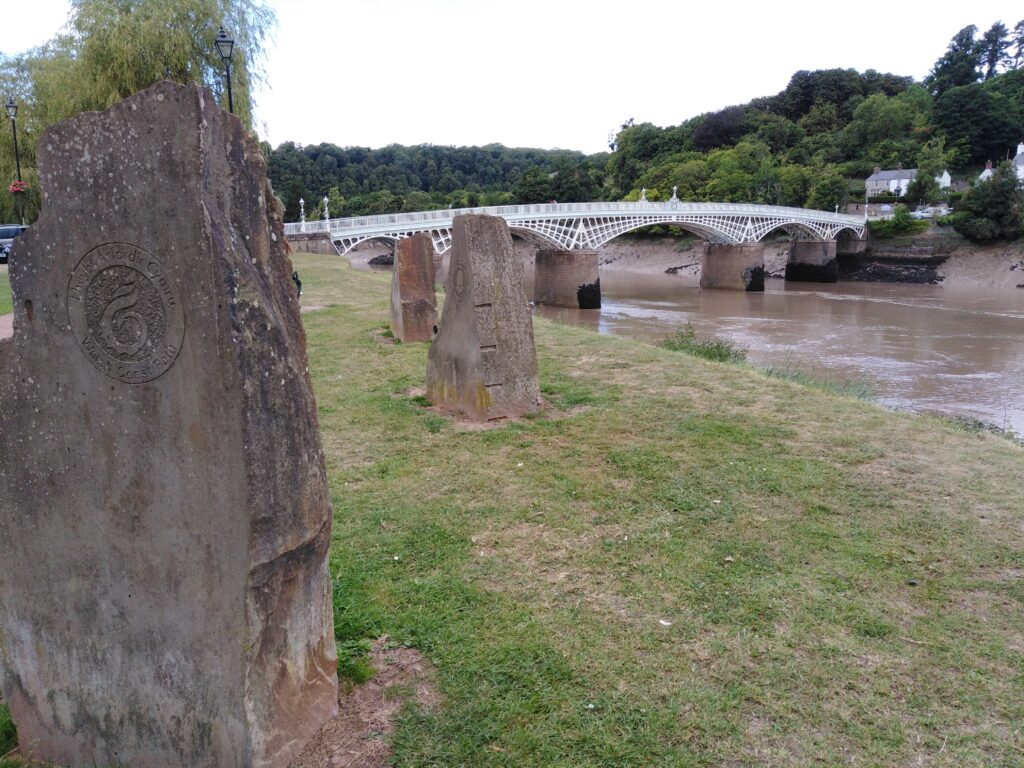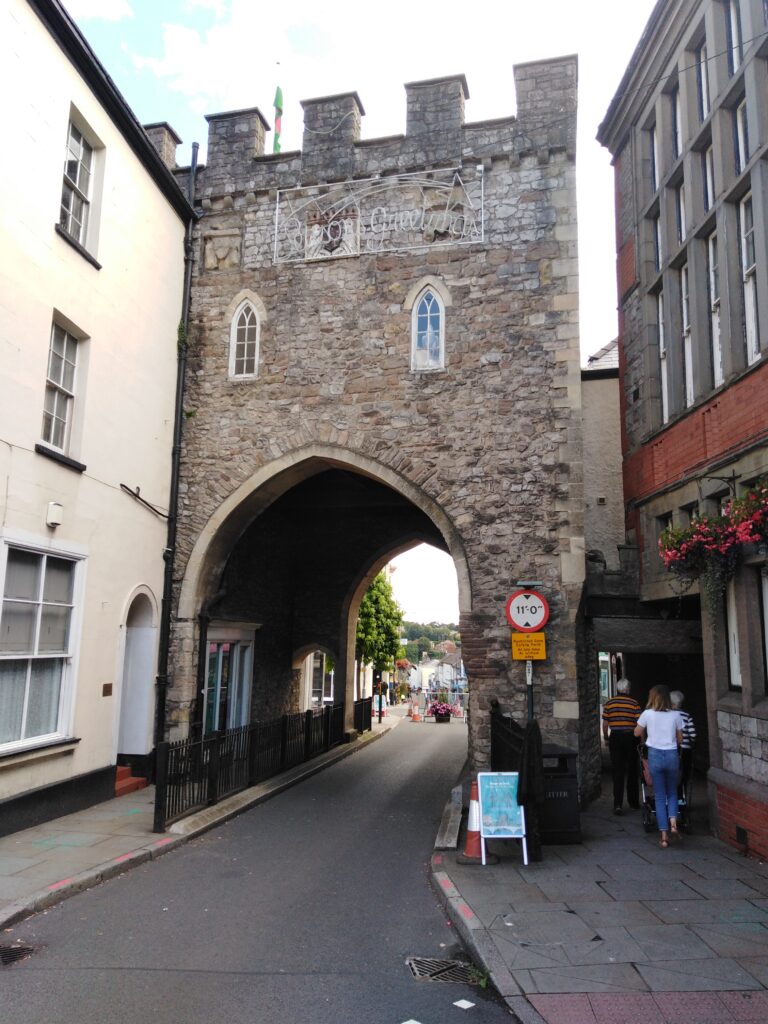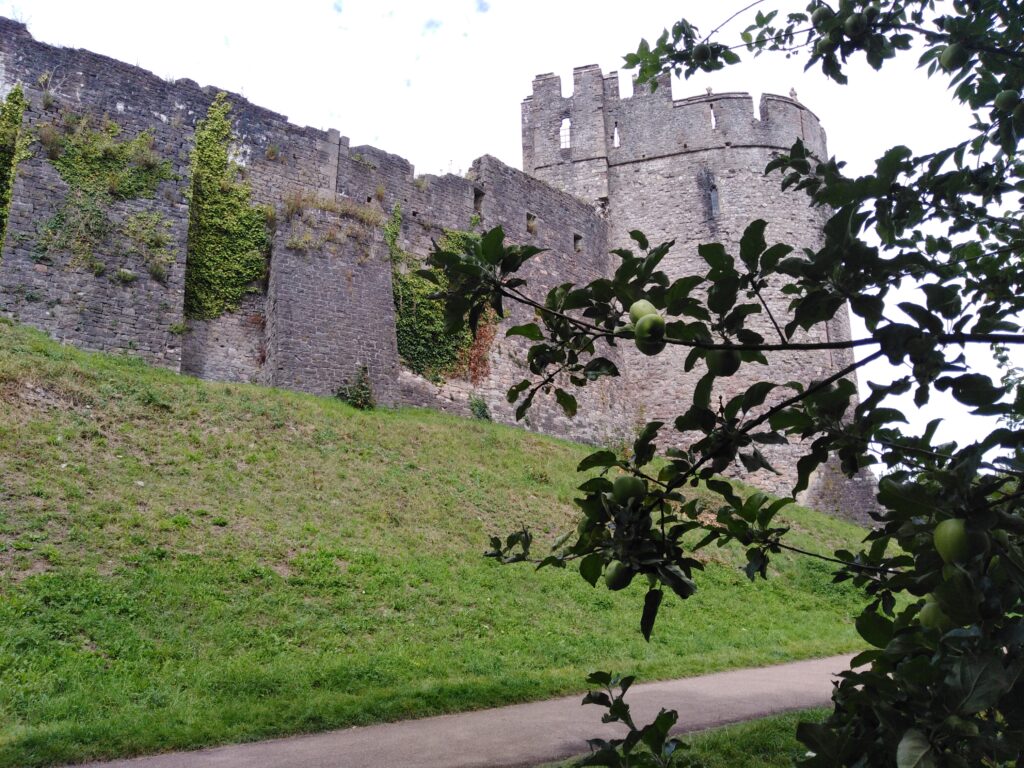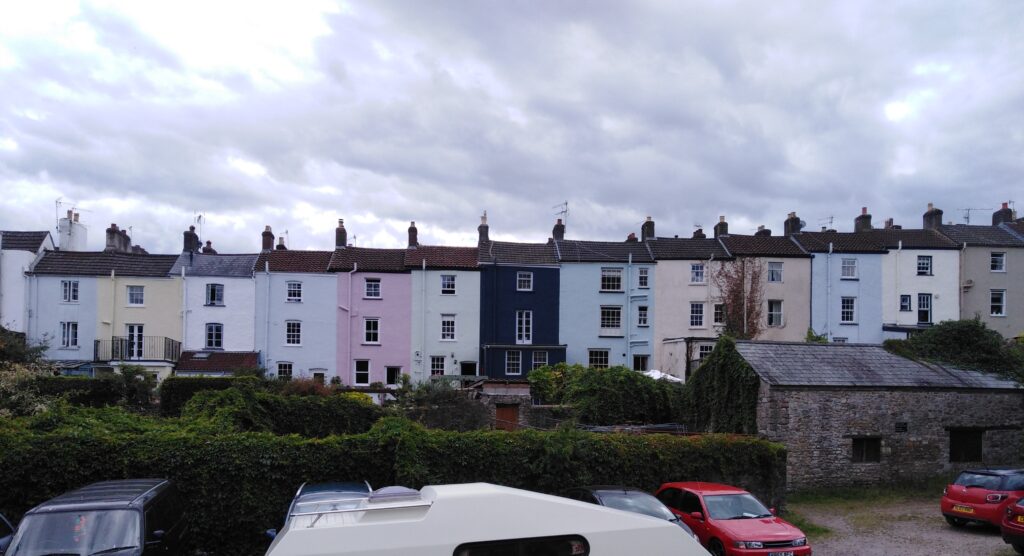Chepstow

CHEPSTOW is the gateway to Wales – a picturesque border town situated at the southern end of the Wye Valley in an area of outstanding natural beauty.
The town is steeped in history and here you will find quaint cobbled streets, buildings that date back 1,000 years, alleyways and secluded delights.
The word Chepstow derives from the old English chepe stowe, meaning a market place, and today the town boasts a wide variety of independent shops, cafés, restaurants and pubs, offering unique products and personal attention.
Chepstow makes a great centre for exploration. The Wye Valley is an area of outstanding natural beauty. Tintern Abbey is world-famous and a little further on are the pretty villages of Brockweir, Llandogo and Redbrook before you arrive at Monmouth, with its iconic Monnow Bridge and the castle that was the birthplace of Henry V.
To the west of Chepstow are medieval Caldicot Castle and the Roman towns of Venta Silurum at Caerwent and Isca at Caerleon. To the east of Chepstow, head for the magical Royal Forest of Dean and discover ancient iron workings, a king’s hunting lodge and maybe deer or wild boar.
Chepstow itself contains five Grade I listed buildings – the magnificent clifftop fortress of Chepstow Castle, Priory Church, Town Gate, Port Wall and Old Wye Bridge – plus several with Grade II listed status.

In the 18th Century the town became popular with visitors following the Wye Tour, Britain’s first tourist trail, which attracted the wealthy and the idealistic in search of the picturesque. Amongst them were the artists Turner and Sandby and the poet Wordsworth.
More recently, in 2019, Chepstow was named among The Sunday Times‘ Best Places to Live in the UK. In its description of the town, the national newspaper said the scrapping of the Severn Bridge tolls had attracted “droves” of home-buyers from across the border, tempted by cheaper land. Those new arrivals, the article continued, were “tempted by the pretty little streets beneath the 11th-Century castle, dotted with whitewashed buildings, colourful cottages and Georgian townhouses”.
Tracey Warnock is manager of The Three Tuns on the town’s Bridge Street. The pub, which has a beer garden backing onto Chepstow Castle, was named on The Guardian’s list of the 50 best pubs in the UK in 2018.
“This is one of the prettiest places to be,” Ms Warnock said of Chepstow. “It appeals to everybody – there are so many walks and there’s a friendly community.”
The historic walled town is nestled within the Lower Wye Valley, a designated Area of Outstanding Natural Beauty on the border between England and Wales.
Just a two-hour drive from London and little more than half an hour away from Bristol, Cardiff and the Brecon Beacons, Chepstow is ideally situated to allow for country-living with city links.
Chepstow boasts plenty of history through the ages, with medieval cottages, the nearby Tintern Abbey, the Old Wye Bridge and St Mary’s Priory. The historic town is still renowned locally for its thriving markets as a centre for local farmers to convene and trade.
However, Chepstow has also evolved over the years into an enjoyable shopping destination, inspired by local products and offering niche, boutique shops amid the handsome Georgian and Victorian buildings in the centre of town.
The town has also received an award-winning redevelopment, adding smart pedestrian areas decorated with stone walls and sculptures inspired by local legends.

Able Seaman William Charles Williams (1880–1915), who was born in Shropshire but raised in Chepstow, was posthumously awarded the Victoria Cross for gallantry in World War I. A gun from a captured German U-boat was presented to the town to mark his bravery, and stands in the town’s main square beside the War Memorial.
Chepstow is an ideal base for walking in Monmouthshire, the Wye Valley and Forest of Dean. With such a diverse landscape there is everything to offer the walker and visitor, whether it be a riverside stroll or a challenging walk along a long-distance trail.
Chepstow is the starting point for a walking route that runs along the country’s entire coastline. The Wales Coast Path stretches some 870 miles from Chepstow to Queensferry in North Wales.
Already well established as a destination for walkers, in April 2012 Chepstow received a feather in its cap by becoming the first ‘Walkers are Welcome’ town in Monmouthshire. It holds an annual Walking Festival in March.
Chepstow is the starting point for three national trails; Gloucester Way, Offa’s Dyke Path and the Wye Valley Walk. The first section of the Wye Valley Walk runs up the valley to Tintern Abbey. From here, you can cross the river and return along the the Offa’s Dyke pathway; making a pleasant circular route of around 12 miles (19km).
In addition, there are two self-guided heritage trails – and natural attractions such as a growing population of peregrine falcons on the river bank.
From Chepstow Castle car park, a 17-mile waymarked walk meanders all the way to Monmouth via the Lower Wye. This will take you through a landscape of wooded gorges and green riverbanks that’s both a Site of Special Scientific Interest and an Area of Outstanding Natural Beauty.
Chepstow has 12 mini-orchards which have been planted around the town for the benefit of the community. The trees are for everybody to appreciate throughout the seasons, and the fruit is there for everyone to help themselves when ripe. The orchards are also important for wildlife, which benefits from the habitats created and the nectar and pollen provided.

Chepstow Town Council initiated the planting of the community orchards and part-fund their maintenance. All planting, pruning and care is done by local volunteers. The trail has been designed by Transition Chepstow as part of the Welsh Perry & Cider Society’s ‘Heritage of Orchards and Cider Making in Wales Project’, funded by the Heritage Lottery.
Named Striguil in Norman times (from a Welsh word meaning bend in the river), by the 14th Century Chepstow had its current name – from the Old English ceap/chepe, meaning market, and stowe, meaning place. In Welsh, it’s called Cas-Gwent, meaning castle of Gwent.
This lively border town combines the best of ancient and modern. A major medieval powerhouse, its Norman castle is built at a strategic point overlooking the River Wye. There is a large car park in front of the castle, beside the Tourist Information Centre.
The castle is under the management of Cadw. It is entered through the late-12th-Century gatehouse, and contains exhibitions on the castle’s history. A footpath beside the castle, through the Dell, is the start and finishing stretch of the Wye Valley Walk.
Since 2012, an annual series of ‘Castell Roc’ music events has been held inside Chepstow Castle each August, featuring performances by artists such as Leo Sayer, Dr Hook, Bad Manners and Jools Holland.
Chepstow’s Great Tower keep was commissioned by William the Conqueror barely a year after the Battle of Hastings, making Chepstow Castle Britain’s oldest surviving post-Roman stone castle.
On Bridge Street, near the castle, you’ll find Chepstow Museum. This substantial Georgian townhouse is packed with displays revealing the history of Chepstow and the River Wye. You’ll see photos and artefacts relating to fishing, the wine trade and shipbuilding, plus paintings by artists who toured the Wye Valley’s most romantic spots in the 18th and 19th centuries.
Chepstow Port Wall, built in the 13th Century, used to have a main gate with a portcullis, where toll collectors would extract taxes from anyone bringing merchandise into town. The gate that stands today is a comparative youngster at a measly 500 years old – and you can now stroll through for free, no matter what you’re carrying.

The Town Gate, now a single carriageway roadway controlled by traffic lights, was once the only point of entrance to the town centre other than the bridge below the castle. It was rebuilt in 1524 and has undergone several renovations since then, most recently in 1986. The Gate House and the room above the archway itself are occasionally opened to the public.
The Old Wye Bridge below the castle was built in 1816, on the site of earlier wooden bridges. The Regency cast iron structure is noted for its elegance. With massive pillars topped by five arches of gracefully curved cast iron, it crosses one of the world’s most tidal stretches of river. Between high and low tide, the Wye can drop by almost 15 metres.
The riverside area of Chepstow was once an open area of shipyards surrounded by warehouses. It has been landscaped, to incorporate flood defence works, as well as being the start and finish point of the Wales Coast Path, marked by standing stones. The gardens contain a bandstand used for summer concerts.
The Chepstow Railway Bridge, slightly downstream, was built to an innovative and functional design by Isambard Kingdom Brunel in 1852. Most of Brunel’s structures have since been replaced. The railway bridge runs alongside the A48 road bridge opened in 1988.
St Mary’s Priory Church is the earliest example of Romanesque architecture in Wales. Founded in the 11th Century as part of a Benedictine priory, it’s similar in age to the Norman keep of Chepstow Castle. It has been altered over the centuries, but the intricately-decorated sandstone arch over the west door is unmistakably Norman.
The town centre itself features stone carvings, artworks and information plaques placed in the pavement and walls, installed as part of a regeneration scheme in 2004/05; they illustrate Chepstow’s history.
Famous as the home of the Welsh Grand National since 1949, which takes place each December, Chepstow Racecourse runs thrilling race days, both on the Flat and over jumps, throughout the year. The great jockey Sir Gordon Richards rode the winners of 11 consecutive races there over two days in 1933. These days, it’s also a popular venue for live music and entertainment.
The racecourse was opened in 1926 in the grounds of Piercefield House, 1 mile (1.6km) north of the town centre on the road towards Tintern. Piercefield House itself, a mansion house rebuilt in the late 18th Century, is now ruined. Its wooded grounds, overlooking the River Wye, contain landscaped features from the time when visits to the estate were an important component of the ‘Wye Tour’; they are now incorporated into the Wye Valley Walk.

The 1976 IAAF World Cross Country Championships, won by Carlos Lopes, were held in the town. Two long routes of the National Cycle Network start in Chepstow, including the Celtic Trail (Lôn Geltaidd). Chepstow has also held professional and amateur street cycling events, such as the Chepstow Grand Prix.
Sportsmen born in the town have included Surrey and Middlesex cricketer Ted Pooley (1842–1907); Eddie Parris (1911–1971), the first black player to play international football for Wales; Olympic gold medal-winning show jumper Richard Meade (born 1936); and two more Wales international footballers, Ollie Burton (born 1941) and Paul Parry (born 1980).
In the field of entertainment, locally-born figures have included Grant Nicholas (born 1967) of the band Feeder, who grew up in the neighbouring village of Pwllmeyric, and film and television actor Owain Yeoman (born 1978), star of The Mentalist.
The writer JK Rowling (born 1965), author of the Harry Potter books, lived in the adjoining village of Tutshill from the age of nine, and attended secondary school at Wyedean School.
Back to HOME PAGE